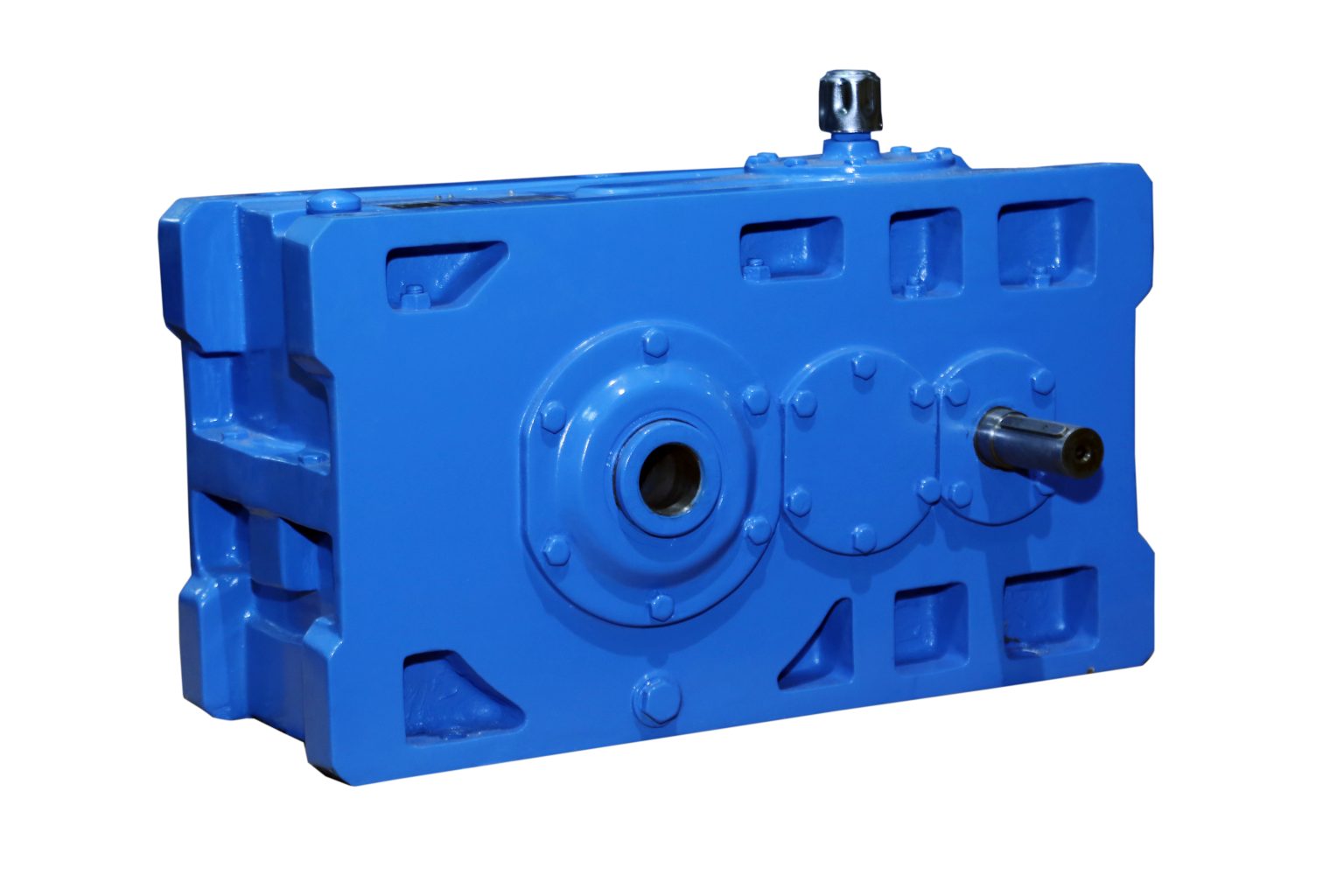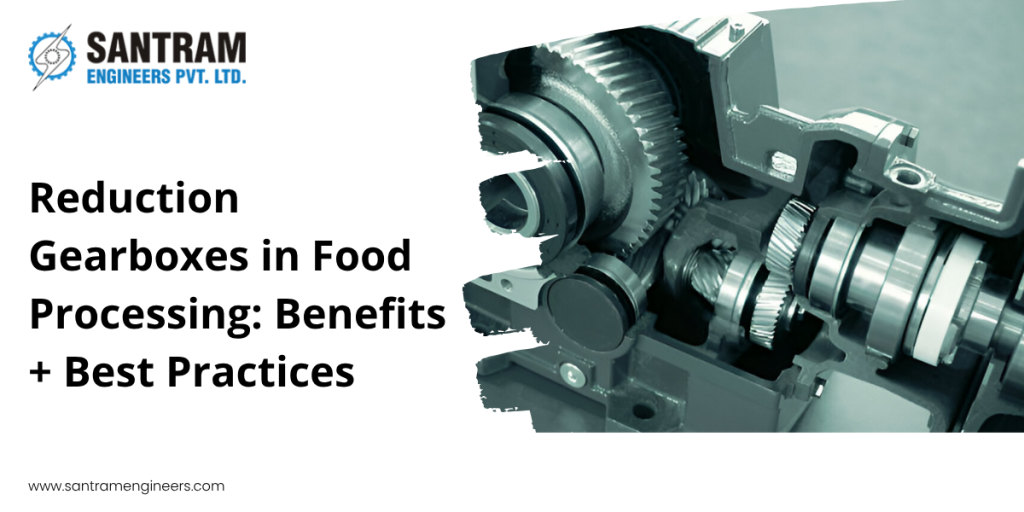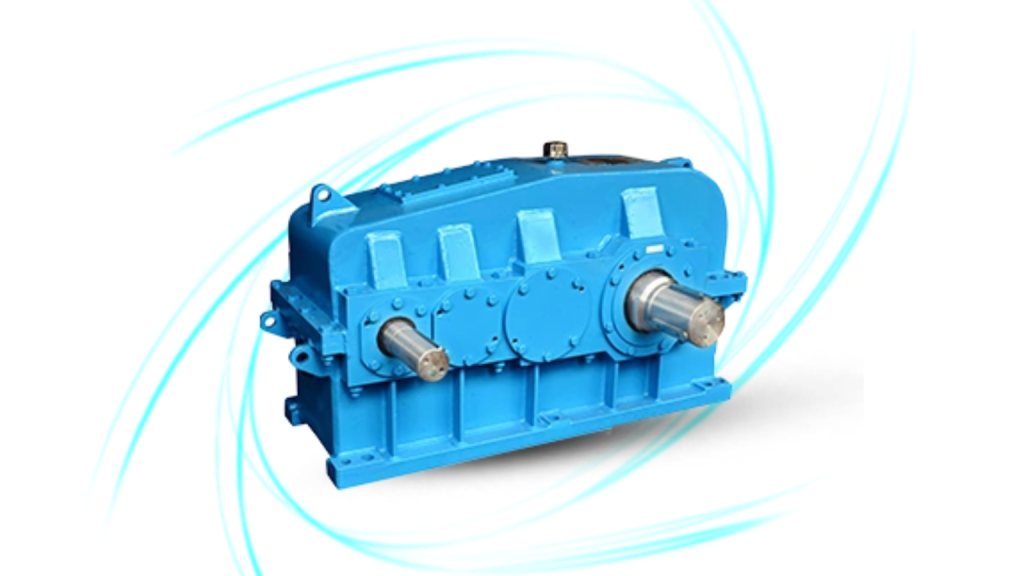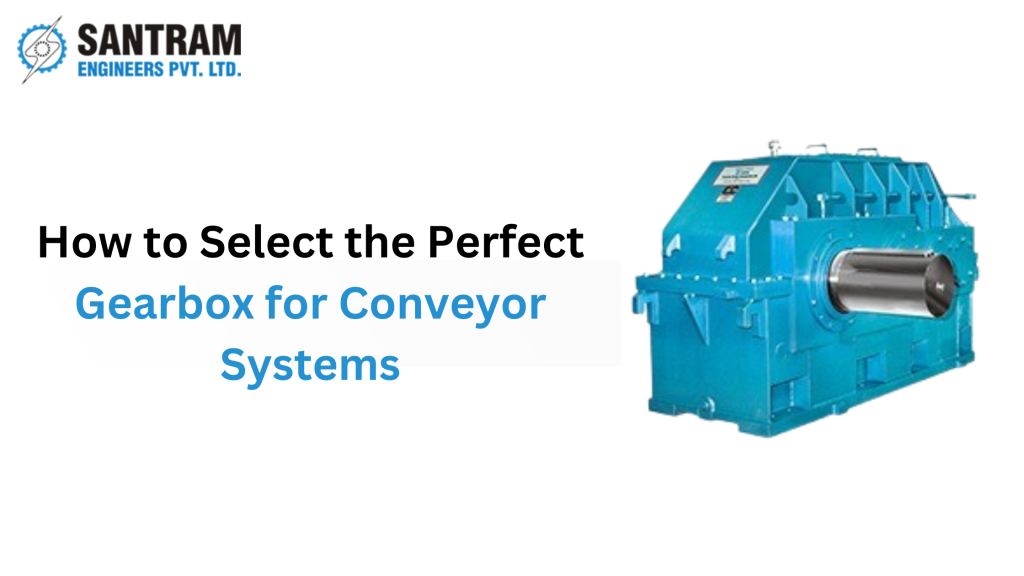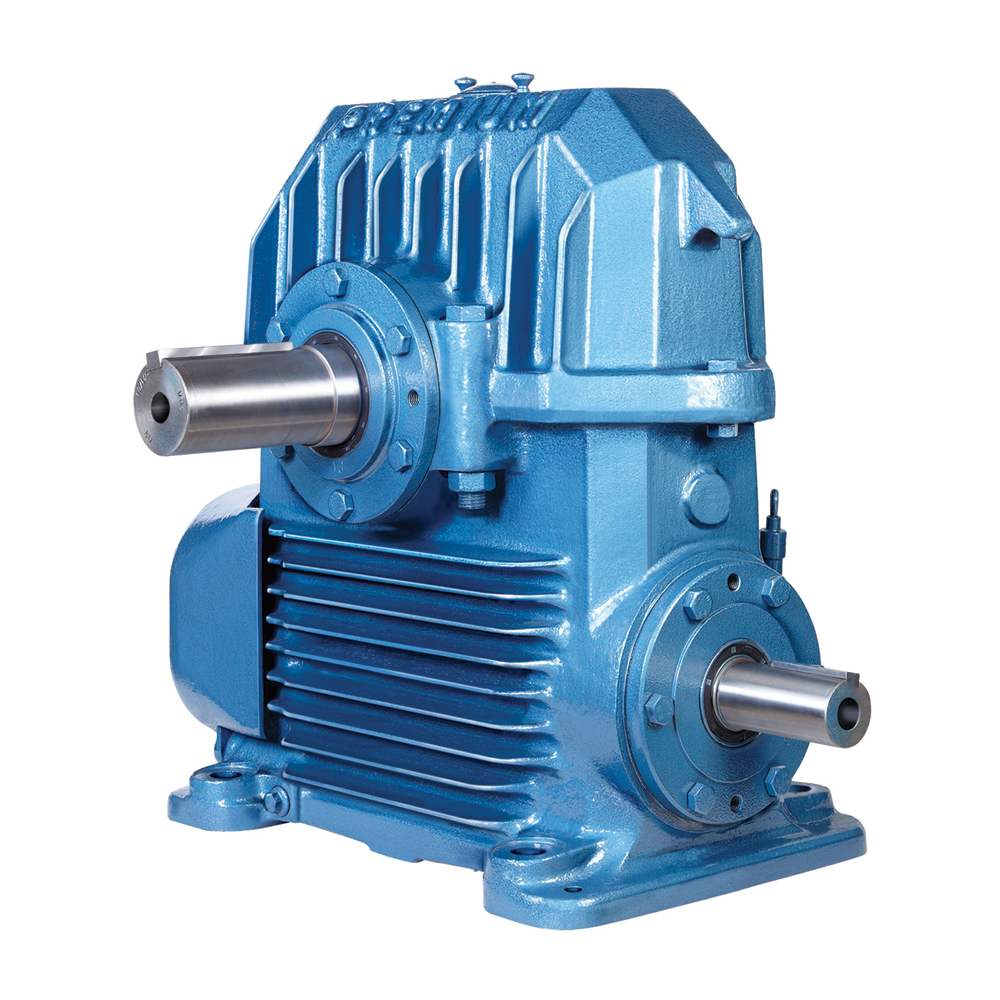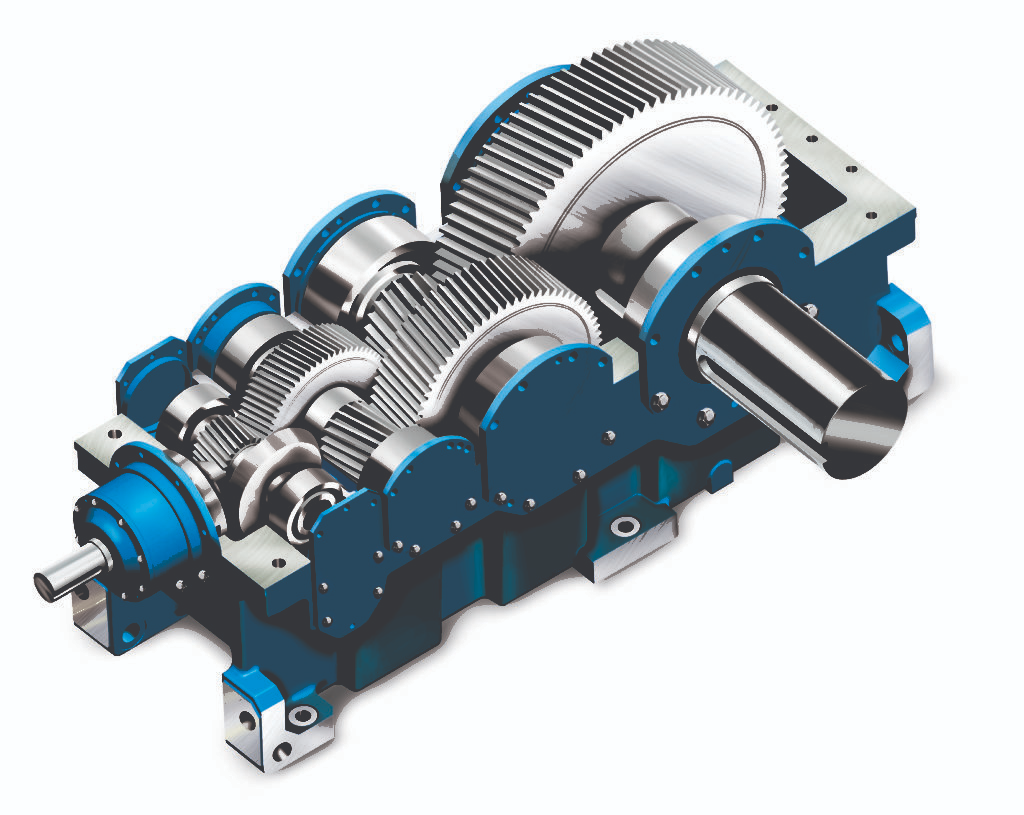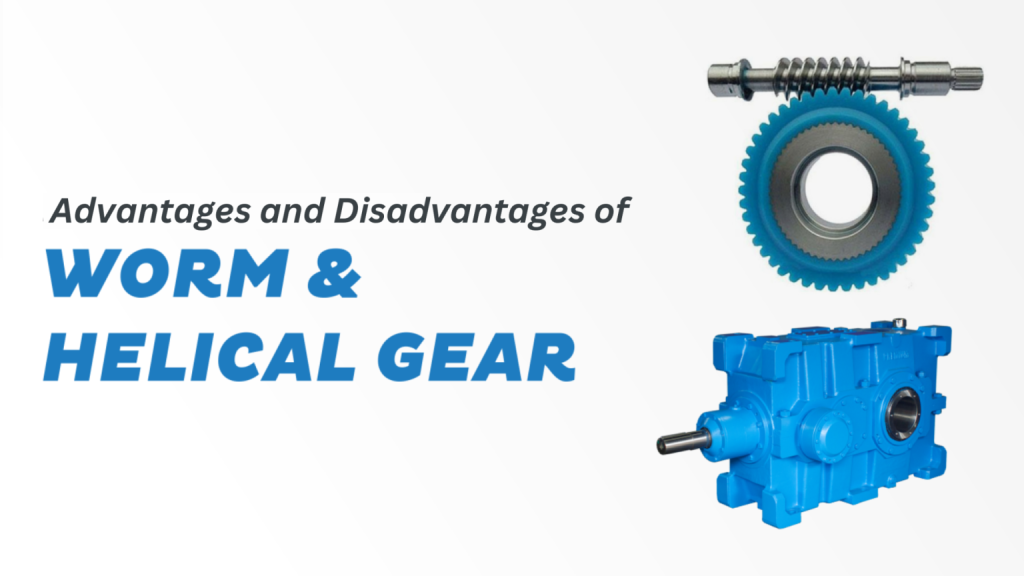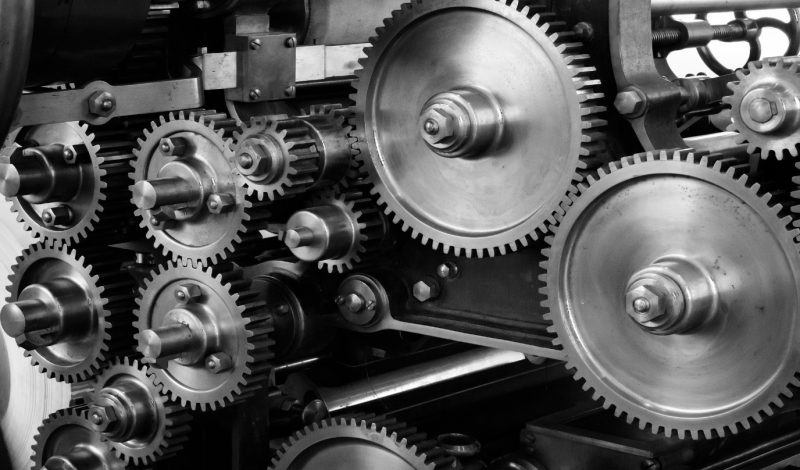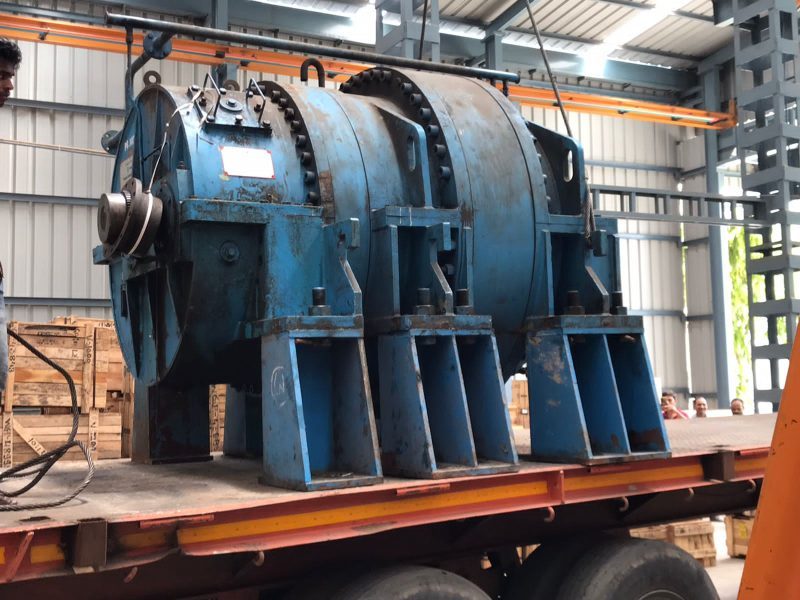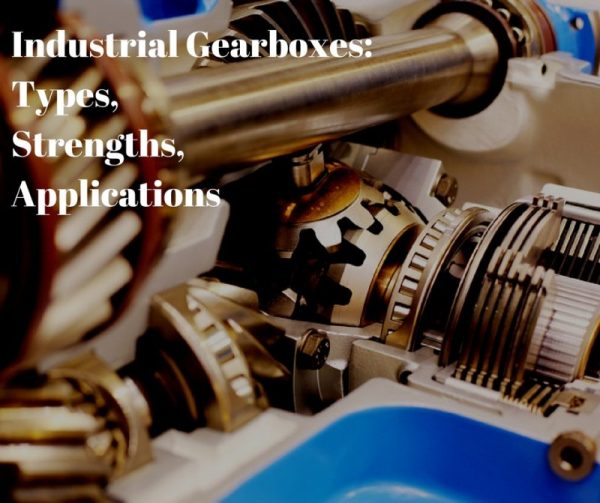When selecting helical gearboxes for industrial applications, one critical factor to consider is the material of construction (MOC) used in manufacturing the gears. The choice of MOC impacts the gear’s performance, durability, and overall efficiency. As one of the well-established industrial gearbox suppliers, we have compiled this guide on various materials used for gear manufacturing, focusing on the properties, advantages, and limitations.
Understanding Gear Materials
The material of construction (MOC) in gear manufacturing significantly influences the gear’s performance and durability. The MOC affects factors like strength, wear resistance, and fatigue life. Choosing the right material ensures the gearbox performs reliably under different loads and operational conditions. Each material has its unique set of properties that make it suitable for specific applications.
18CrNiMo
Composition and Properties
18CrNiMo is a high-grade steel alloy commonly used in manufacturing helical gearboxes. Understanding its composition and properties can help businesses make informed decisions when selecting gear materials.
Chemical Composition
18CrNiMo steel comprises several elements:
- Carbon (C): 0.18% – 0.21%
- Chromium (Cr): 0.90% – 1.20%
- Nickel (Ni): 1.20% – 1.60%
- Molybdenum (Mo): 0.15% – 0.25%
- Silicon (Si): 0.20% – 0.50%
- Manganese (Mn): 0.60% – 0.90%
This combination of elements contributes to the steel’s overall performance, balancing strength, toughness, and resistance to wear and fatigue in helical gearboxes.
Physical and Mechanical Properties
The physical and mechanical properties of 18CrNiMo steel include:
- Tensile Strength: Approximately 850 MPa
- Yield Strength: Around 700 MPa
- Hardness: Typically 250-290 HB
- Impact Toughness: High, making it suitable for dynamic loads
These properties enable 18CrNiMo steel to handle significant stresses and resist deformation, which is essential for the reliable operation of helical gearboxes.
Advantages
18CrNiMo steel offers several benefits, making it a preferred choice for helical gearboxes:
- High Strength and Toughness: The steel’s composition ensures that it can withstand heavy loads and impact forces.
- Good Wear Resistance: Its resistance to wear extends the lifespan of gears, reducing maintenance needs and downtime.
- Improved Fatigue Resistance: The material’s toughness helps it resist cracking and failure under cyclic loading conditions.
Applications
18CrNiMo steel is commonly used in various applications, including:
- Heavy Machinery: Gears made from this material are well-suited for industrial machinery requiring high strength and reliability.
- Automotive Gearboxes: Its wear resistance and toughness make it ideal for automotive applications where gear performance is critical.
- Aerospace Components: The material’s high strength-to-weight ratio is advantageous in aerospace applications.
Performance in Different Operating Conditions
In different operating conditions, 18CrNiMo steel maintains its performance well:
- High Load Conditions: It performs reliably under high load and stress situations, making it suitable for heavy-duty applications.
- Extreme Temperatures: The steel remains stable and functional across a range of temperatures, though extreme temperatures may require additional considerations.
- Corrosive Environments: While 18CrNiMo has good wear resistance, its performance in highly corrosive environments might require protective coatings or treatments.
Limitations
Despite its advantages, 18CrNiMo steel has some limitations:
- Cost: It can be more expensive compared to other materials, potentially increasing overall production costs.
- Machining Difficulty: The high strength of 18CrNiMo can make it more challenging to machine compared to less robust materials.
- Heat Treatment Sensitivity: The material requires precise heat treatment to achieve optimal properties, which can add to processing complexity.
20MnCr
Composition and Properties
20MnCr is a commonly used steel alloy in the manufacturing of helical gearboxes. Understanding its composition and properties can help businesses select the right material for their gear needs.
Chemical Composition
The chemical composition of 20MnCr includes:
- Carbon (C): 0.18% – 0.22%
- Manganese (Mn): 1.30% – 1.60%
- Chromium (Cr): 0.80% – 1.00%
- Silicon (Si): 0.20% – 0.35%
- Sulfur (S): ≤ 0.035%
- Phosphorus (P): ≤ 0.035%
This specific blend of elements gives 20MnCr its desirable mechanical properties, making it suitable for various gearbox applications.
Physical and Mechanical Properties
20MnCr exhibits the following physical and mechanical properties:
- Tensile Strength: Approximately 750 MPa
- Yield Strength: Around 550 MPa
- Hardness: Typically 200-250 HB
- Impact Toughness: High, making it durable under dynamic loads
These properties ensure that 20MnCr steel can handle substantial stresses and maintain its integrity over time.
Advantages
20MnCr offers several benefits for helical gearboxes:
- High Core Strength and Fatigue Resistance: The material’s core strength and resistance to fatigue make it ideal for high-load applications.
- Good Hardenability: Its ability to harden uniformly improves the durability of gears, enhancing their performance and lifespan.
Applications
20MnCr steel is used in various applications, including:
- Heavy-Duty Gearboxes: Its high core strength is advantageous in helical gearboxes subjected to heavy loads and demanding conditions.
- Industrial Machinery: The steel’s fatigue resistance makes it suitable for machinery that operates under constant stress.
- Automotive Applications: 20MnCr is often used in automotive gearboxes where strength and durability are crucial.
Performance Characteristics
In different operating conditions, 20MnCr performs well:
- Load-Bearing Capacity: It can handle high loads without significant deformation or failure.
- Temperature Stability: The material maintains its mechanical properties across a range of temperatures, although extreme temperatures might require additional considerations.
Limitations
Despite its advantages, 20MnCr has some limitations:
- Cost: The processing and heat treatment required to achieve optimal properties can make it more expensive.
- Machinability: The steel’s hardness can present challenges during machining, potentially affecting production efficiency.
- Corrosion Resistance: It may require additional treatment or coating in highly corrosive environments to prevent degradation.
EN353
Composition and Properties
EN353 is another alloy steel used in helical gearbox manufacturing, valued for its hardness and wear resistance. Its properties make it a popular choice for demanding applications.
Chemical Composition
EN353 consists of:
- Carbon (C): 0.18% – 0.22%
- Manganese (Mn): 1.20% – 1.60%
- Chromium (Cr): 0.90% – 1.20%
- Nickel (Ni): 1.50% – 2.00%
- Silicon (Si): 0.20% – 0.35%
- Sulfur (S): ≤ 0.035%
- Phosphorus (P): ≤ 0.035%
The alloy’s composition contributes to its high tensile strength and case-hardening properties.
Physical and Mechanical Properties
EN353 features the following properties:
- Tensile Strength: Approximately 800 MPa
- Yield Strength: Around 650 MPa
- Hardness: Typically 220-280 HB
- Impact Toughness: High, suitable for dynamic loads
These characteristics make EN353 a strong candidate for helical gearboxes or other gear applications requiring durability and resistance to wear.
Advantages
EN353 provides several benefits:
- High Tensile Strength and Wear Resistance: It offers exceptional strength and durability, crucial for high-stress environments.
- Good Case Hardening Properties: The material hardens well, enhancing surface wear resistance and extending gear life.
Applications
EN353 is widely used in:
- Heavy Machinery Gearboxes: Its strength and wear resistance are ideal for machinery subjected to heavy loads.
- Automotive Gearboxes: The alloy’s durability makes it suitable for automotive applications where high performance is needed.
- Industrial Equipment: EN353’s properties make it a good choice for various types of industrial gearboxes including helical gearboxes.
Performance in Demanding Conditions
EN353 performs well under challenging conditions:
- Load Handling: It can handle high loads and maintain performance without significant wear or failure.
- Temperature Range: The steel remains effective across various temperatures, though extreme conditions may require additional considerations.
Limitations
Despite its strengths, EN353 has some drawbacks:
- Cost: The alloy can be more expensive due to its complex manufacturing process and heat treatment.
- Machining Difficulty: Its hardness may pose challenges during machining, impacting production efficiency.
- Corrosion Resistance: Similar to other high-strength steels, EN353 may need additional protection in corrosive environments.
SAE8620
Composition and Properties
SAE8620 is a low-alloy steel commonly used in the manufacturing of helical gearboxes. Known for its versatility, it provides a good balance of properties suitable for various industrial applications.
Chemical Composition
The chemical composition of SAE8620 includes:
- Carbon (C): 0.18% – 0.23%
- Manganese (Mn): 0.60% – 0.90%
- Chromium (Cr): 0.40% – 0.60%
- Nickel (Ni): 1.00% – 1.30%
- Molybdenum (Mo): 0.15% – 0.25%
- Silicon (Si): 0.20% – 0.35%
- Sulfur (S): ≤ 0.040%
- Phosphorus (P): ≤ 0.040%
These elements are combined to provide a balanced mix of hardness and toughness, essential for reliable helical gearbox performance.
Physical and Mechanical Properties
SAE8620 displays the following properties:
- Tensile Strength: Approximately 800 MPa
- Yield Strength: Around 600 MPa
- Hardness: Typically 200-250 HB
- Impact Toughness: High, making it suitable for dynamic and shock-loading conditions
These properties enable SAE8620 to perform well under various stresses and loads.
Advantages
SAE8620 offers several key advantages:
- Good Balance of Hardness and Toughness: The steel’s composition allows it to maintain a balance between hardness for wear resistance and toughness for impact strength.
- Ease of Machining: Compared to harder steels, SAE8620 is relatively easier to machine, which can streamline manufacturing processes.
Applications
SAE8620 is commonly used in:
- Automotive Gearboxes: Its balance of hardness and toughness is ideal for automotive applications where reliability is critical.
- Industrial Gearboxes: The steel’s properties make it suitable for industrial machinery that experiences significant wear and stress.
- Heavy Equipment: SAE8620 performs well in heavy-duty applications, handling substantial loads effectively.
Performance in Various Conditions
SAE8620 performs effectively across different conditions:
- Load-Bearing: It handles high loads and impact forces without significant deformation.
- Temperature Stability: The steel maintains its properties across a range of temperatures, although extreme conditions may affect its performance.
Limitations
Despite its benefits, SAE8620 has some limitations:
- Wear Resistance: While it offers good wear resistance, it may not be as durable as some high-alloy steels in extremely abrasive conditions.
- Corrosion Resistance: SAE8620 may require additional treatments or coatings for use in corrosive environments to prevent degradation.
EN9
Composition and Properties
EN9 is a high-carbon steel known for its strength and toughness. It is frequently used in the manufacturing of helical gearboxes, valued for its performance under demanding conditions.
Chemical Composition
EN9 steel consists of:
- Carbon (C): 0.55% – 0.65%
- Manganese (Mn): 0.60% – 0.90%
- Silicon (Si): 0.20% – 0.35%
- Sulfur (S): ≤ 0.050%
- Phosphorus (P): ≤ 0.050%
The high carbon content contributes to its strength and hardness, making it suitable for various heavy-duty applications.
Physical and Mechanical Properties
The physical and mechanical properties of EN9 are:
- Tensile Strength: Approximately 850 MPa
- Yield Strength: Around 650 MPa
- Hardness: Typically 250-300 HB
- Impact Toughness: High, providing resistance to shock loads and impacts
These properties ensure EN9 is well-suited for high-stress environments.
Advantages
EN9 offers several advantages for helical gearboxes:
- High Tensile Strength and Toughness: It provides excellent strength and toughness, which are crucial for high-load applications.
- Good Wear Resistance: Its hardness and strength contribute to effective wear resistance, enhancing the lifespan of gears.
Applications
EN9 is used in:
- Heavy-Duty Gearboxes: The steel’s strength makes it ideal for gearboxes that experience significant loads.
- Industrial Machinery: It performs well in machinery subjected to high stress and wear.
- Automotive Components: EN9 is often used in automotive gearboxes and other components requiring high strength.
Performance in Different Environments
EN9 performs well under various conditions:
- High Load and Stress: It can handle substantial loads and impacts without significant deformation or failure.
- Temperature Conditions: The steel maintains its properties over a range of temperatures, though very high or low temperatures may require additional considerations.
Limitations
EN9 also has some drawbacks:
- Machining Difficulty: The high carbon content can make EN9 more challenging to machine compared to lower carbon steels.
- Corrosion Resistance: Like many high-carbon steels, EN9 may require additional treatment or coating for use in corrosive environments to prevent rust and deterioration.
Comparative Analysis for Different MOCs
| Property | SAE8620 | 20MnCr | EN353 | EN9 | 18CrNiMo |
| Tensile Strength (MPa) | ~800 | ~750 | ~800 | ~850 | ~850 |
| Yield Strength (MPa) | ~600 | ~550 | ~650 | ~650 | ~700 |
| Hardness (HB) | 200-250 | 200-250 | 220-280 | 250-300 | 250-290 |
| Wear Resistance | Good | Good | High | High | Very High |
| Toughness | High | High | High | Very High | High |
| Cost | Moderate | Moderate | Higher | Moderate | Higher |
| Availability | Widely available | Widely available | Widely available | Widely available | Widely available |
| Ease of Machining | Good | Moderate | Moderate | Challenging | Moderate |
| Heat Treatment Process | Relatively simple | Relatively simple | Complex | Complex | Complex |
| Suitability for Heavy Loads | Good | Excellent | Excellent | Excellent | Excellent |
| Suitability for High-Impact Conditions | Good | Good | Excellent | Excellent | Very Good |
| Suitability for Automotive Gearboxes | Good | Good | Very Good | Very Good | Excellent |
| Suitability for Corrosive Environments | Needs coating | Needs coating | Needs coating | Needs coating | Needs coating |
This table provides a clear comparative analysis of SAE8620, 20MnCr, EN353, EN9, and 18CrNiMo across various factors important for selecting materials for helical gearboxes.
Discover the Best MOCs with a Leading Industrial Gearbox Supplier
Choosing the right material for your helical gearboxes can make a significant difference in performance and longevity. Santram Engineers is the largest distributor and dealer of industrial gearboxes for Premium Transmission Limited, a leading gear manufacturing company.
We offer expert insights and top-quality solutions tailored to your specific industrial needs. Explore our range of materials, including SAE8620, 20MnCr, EN353, EN9, and 18CrNiMo, each designed to deliver exceptional strength, durability, and reliability.
Whether you’re looking for high tensile strength, superior wear resistance, or ease of machining, we have the right solution for you. Partner with one of the leading industrial gearbox suppliers and ensure your equipment performs at its best.
Contact us to discuss your requirements and find the perfect helical gearboxes for your applications. Reach out to us at +91-96247 39393 or write to us at sales@santramengineers.com for a personalised consultation and see how we can support your business success.

